What´s wrong with the fashion industry - On theft and cultural appropriation
For a few weeks I´ve had this topic on my mind - the terrible abuse of fashion industry on cultures , on those developing countries that produce our garments, on environment , on fashion workers and on ourselves.
Glenn O’Brien: As an industry, fashion today represents all the worst values: sheer egoism, lack of conscience, instant gratification, mental laziness.
A couple of months ago I ran into an article in my national news presenting designer Tori Burch 2018 Resort collection ... ´slightly´ resembling a Romanian coat displayed at the Metropolitan Museum in New York and promoting it as being inspired by African garments.
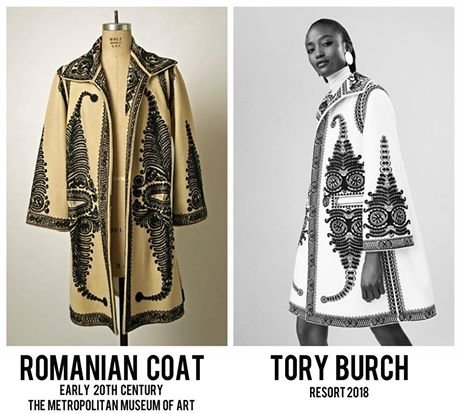
Slightly resembling, indeed... It´s not the first time big fashion houses fall in love with our Romanian blouse and the traditional motifs sewed on the garments. Most of the times they acknowledge the inspiration and pass the credit to their rightful owners.
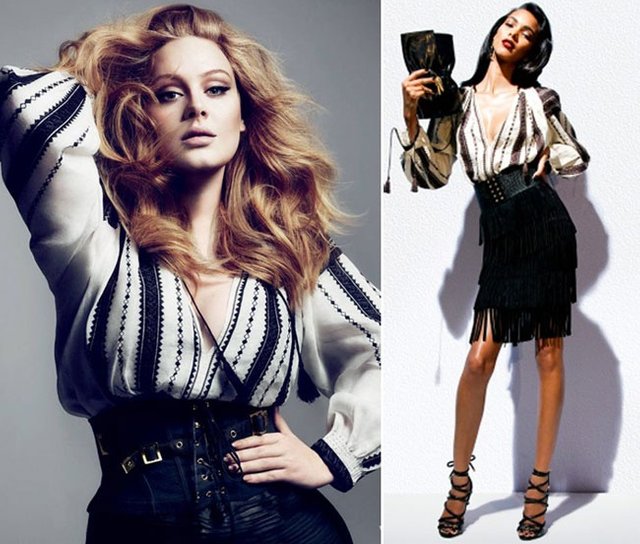
Adele wearing the Tom Ford blouse for a Vogue photoshoot
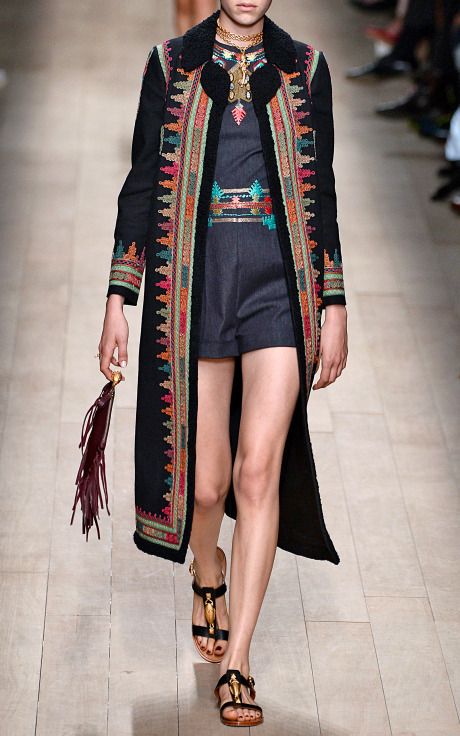
Valentino SpringSummer 2014 Trunkshow Moda Operandi
But what is truly disturbing is the blatant theft of which many of the biggest names in the industry are guilty of. With no respect or understanding of the history and stories behind the patterns, colors or motifs - they steal, lie and use their brands to sell other people´s work to astonishing prices.
The latest example is the none other than the house of Dior and its new creative director Maria Grazia Chiuri.
I think women want iconic pieces that allow them to find a look for themselves,” she said. Pointing to some of the test shots, she noted how long embroidered coats over tiered, sheer dresses; vests with velvet incrustations of hearts and diamonds; and Japanese denim with neo-folkloric metallic embroidery all contributed to an eclectic interpretation of Miss Dior. A steady push-pull of respect and disruption produced several catchy pieces, including the new bag constructed with fine saddlery craftsmanship only to be emblazoned, hip-hop style, with Dior in block typography and finished with a woven and studded strap that looked like a souvenir from a trip to Nepal. — Maria Grazia Chiuri for Vogue.
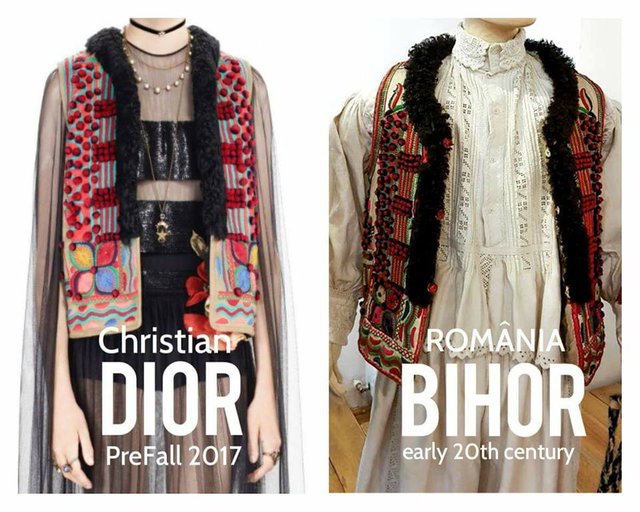
Well now, there is just a SMALL problem with this quote from Vogue. It´s neither Paris, nor Nepal, not even Japanese folk that inspired the top pieces of the new 2017 pre-fall collection of Dior. It´s just a particular embroidered folk coat from the region of Bihor, Romania, namely the “cojoc binşenesc”. This particular embroidered folk coat has an estimated age of 100 years old, part of the collection of Răzvan Fericean.
As you can see, she gives credit to Japanese folk, Nepal souvenir, but she forgets to mention that the embroidered folk coat, which is identical, she came up with nothing new in regards, is a Romanian folk design.
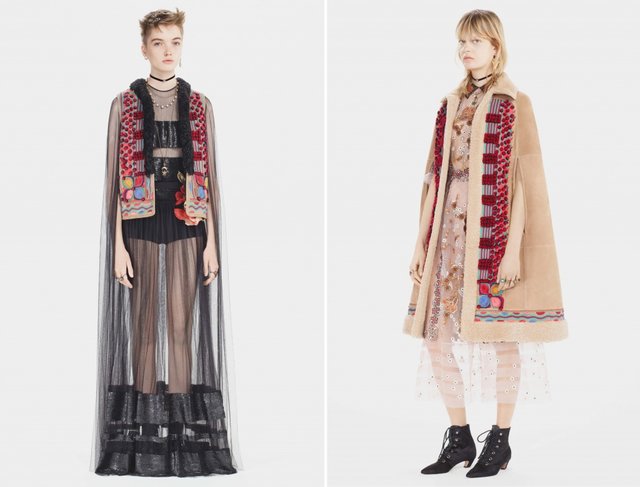
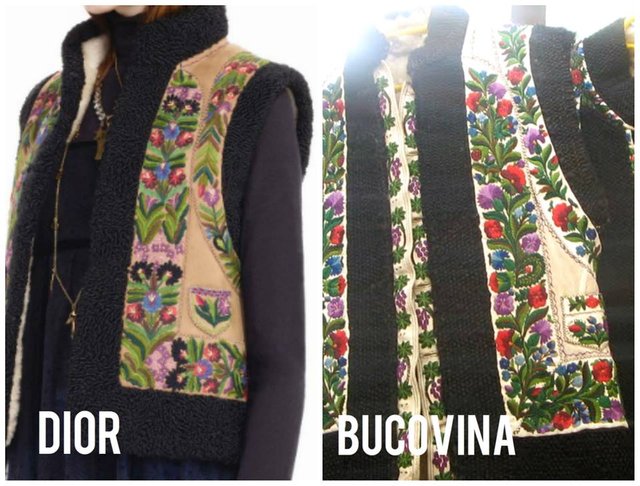
Again, the issue is not the inspiration. I will not take the cultural appropriation discussion to the point where models could only wear jeans and white tees on the catwalk.
And let´s leave aside the fact that they have no idea what the motifs and symbols on those garments stand for. Let´s also leave aside that they don´t bother to return something to the community that gave the inspiration, even though they put a price tag of 14 000 $ .
The issue is being so goddamn arrogant that they don´t even bother to give credit to the real source!
The same problem has been flagged by several communities from around the world: Native Americans ( the latest fuck-up of Victoria Secret for example), the Mexican or Peruvian communities or not to mention the poor African cultures that are all thrown into a big melting pot. The disease has spread into interior design world just as badly and my ears bleed when I hear ´boho´ , ´ethnic motifs´ or Scandi style.
There are ways to respect other peoples´ heritage : for example Brazilian brand Osklen inspired its 2016 collection from the Asháninka, an indigenous people who live in the Brazilian and Peruvian rain forest.
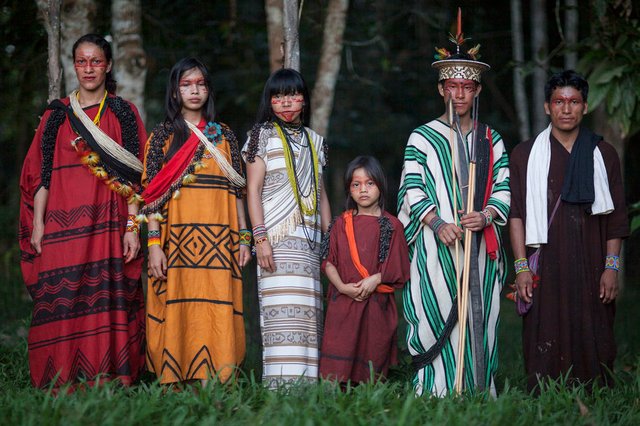
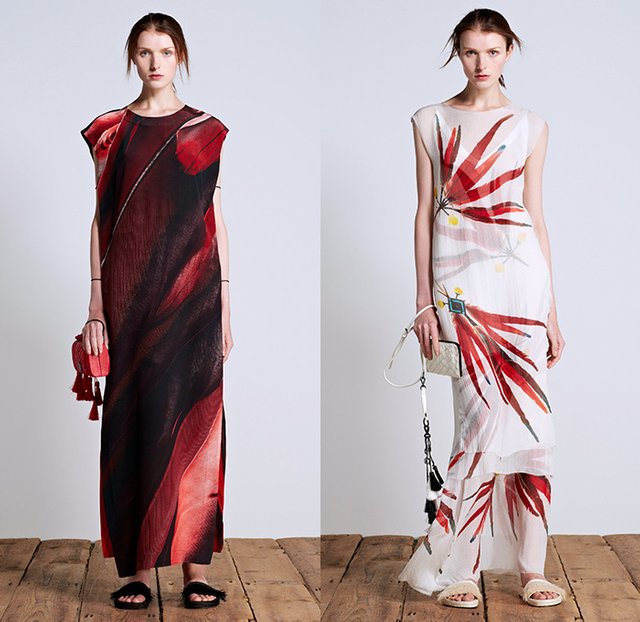
In return for permission to adapt their tattoos and traditional fabrics, Osklen paid the tribe. With that money, the Asháninka have been able to make various improvements, including building a school.
“Sharing values, sharing visions, sharing the economics, I think it’s the easiest way to work. This is the magic of style. It’s the magic of art. It’s the magic of the design.”
Oskar Metsavaht.
Congratulations @fromplacetospace! You have received a personal award!
Click on the badge to view your Board of Honor.
Do not miss the last post from @steemitboard:
SteemitBoard World Cup Contest - Quarter Finals - Day 2
Participate in the SteemitBoard World Cup Contest!
Collect World Cup badges and win free SBD
Support the Gold Sponsors of the contest: @good-karma and @lukestokes
Congratulations @fromplacetospace! You received a personal award!
You can view your badges on your Steem Board and compare to others on the Steem Ranking
Vote for @Steemitboard as a witness to get one more award and increased upvotes!